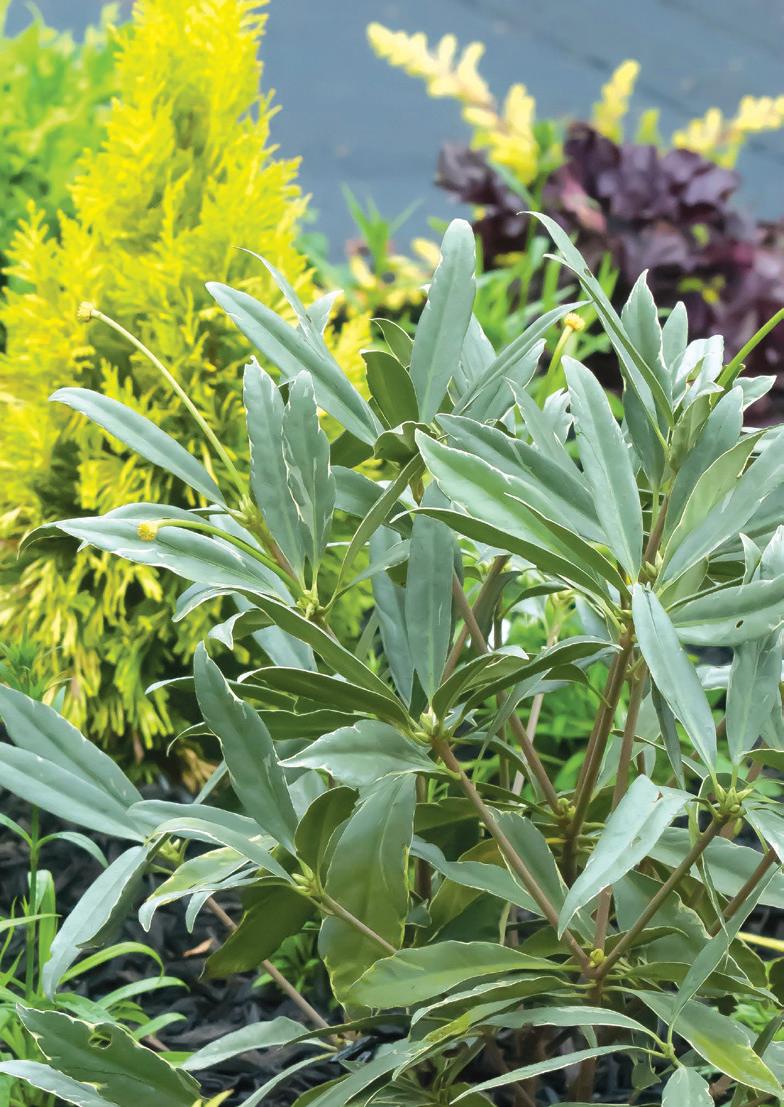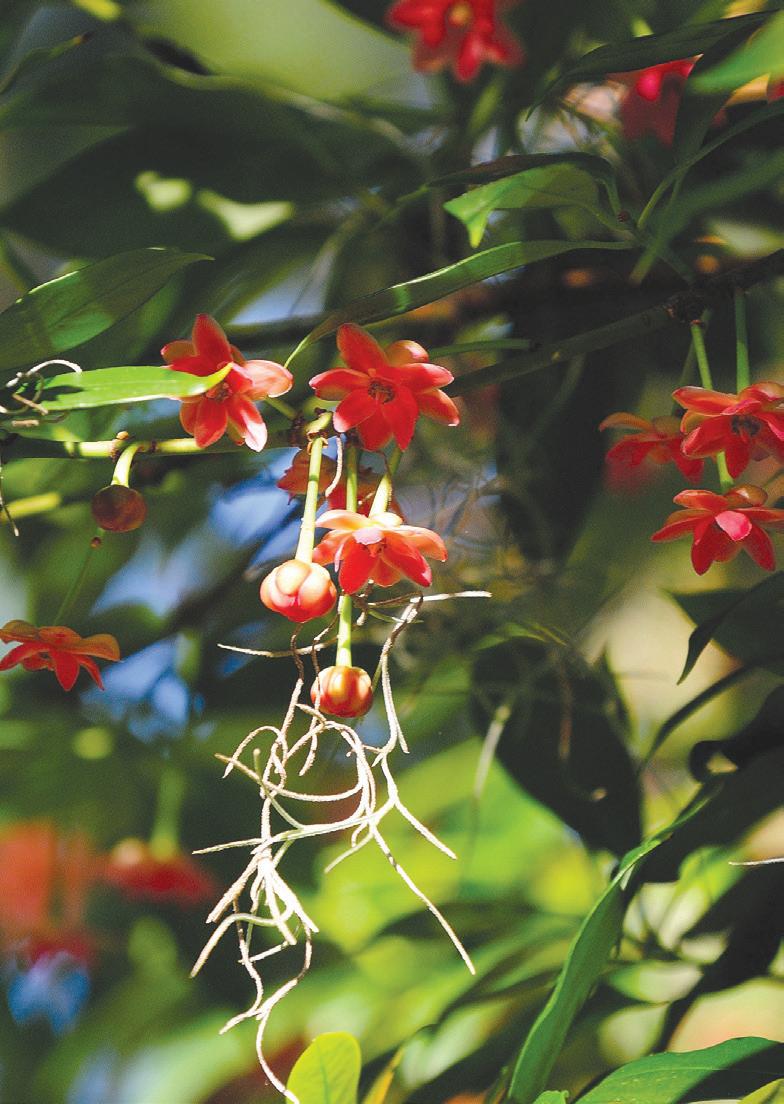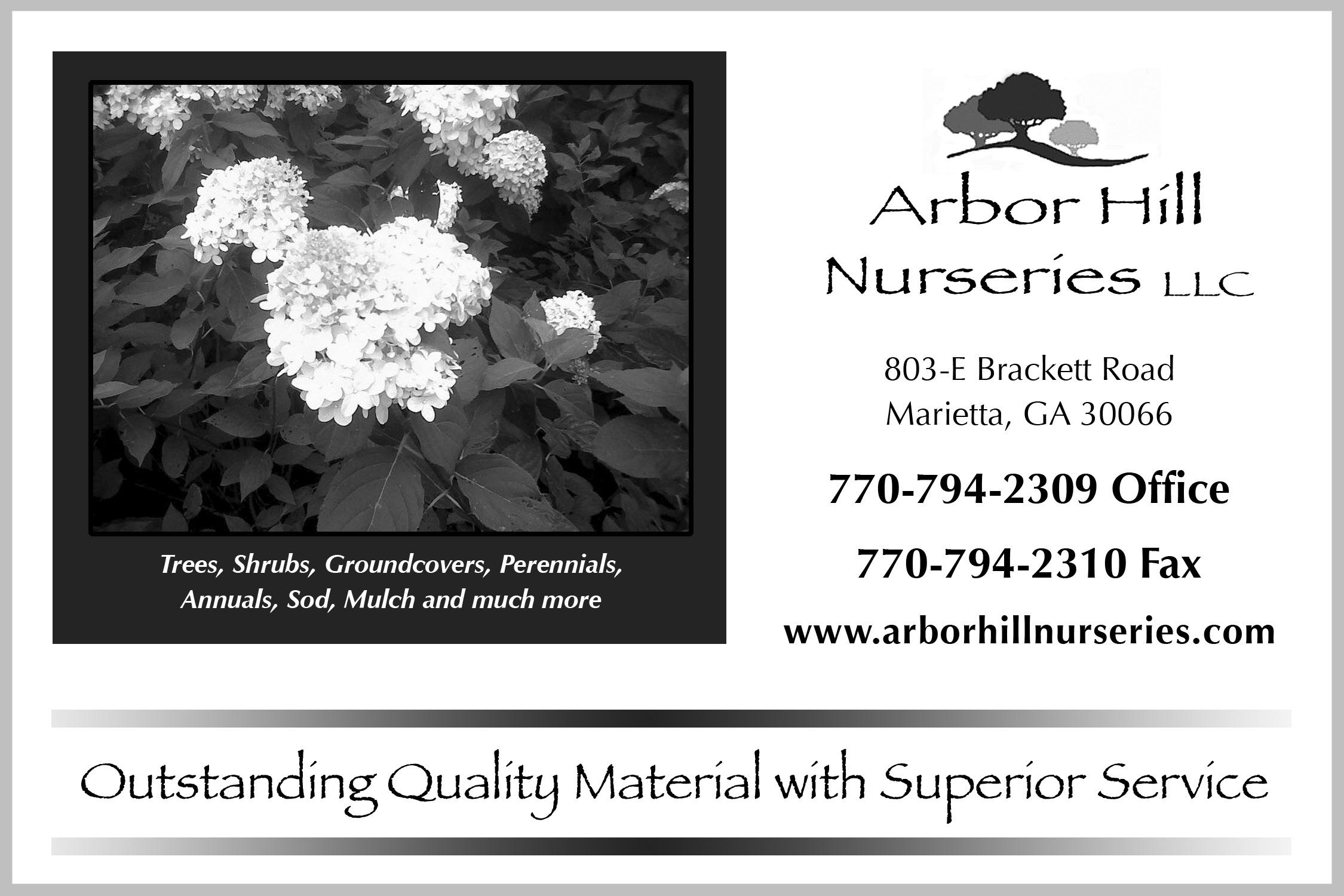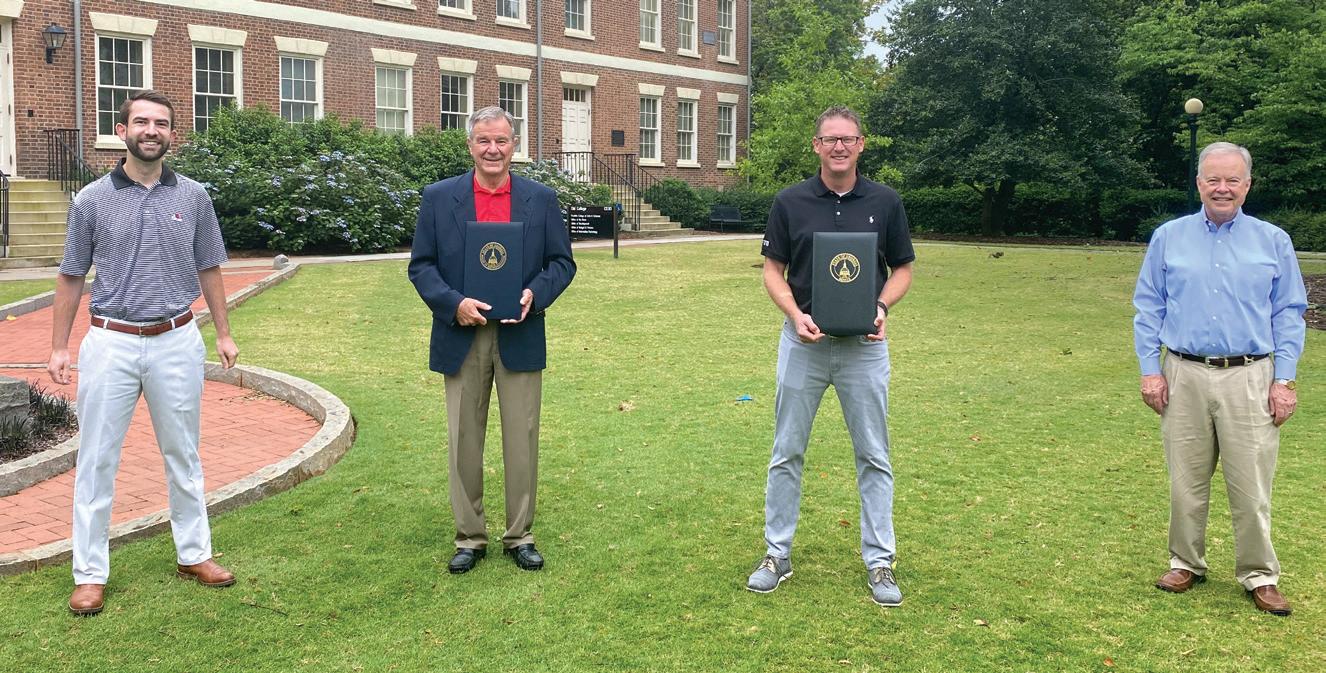
3 minute read
Picturesque anise Transforming the woodland garden
Picturesque anise
Transforming the woodland garden
Fall is the best time to plant trees and shrubs
from the standpoint acclimatization in the landscape. That being said, I would like to give a shout out for some underused Illicium or anise.
Throughout the South or Pacific Northwest in zones 7 and warmer the Illicium is a muchused shrub for the evergreen structure or bones of the landscape. But those with contrasting foliage are still lagging way behind.
What do I mean by contrasting foliage? I am talking about 24-karat gold foliage as in the variety Florida Sunshine and the Grey Ghost with leaves that have pewter gray and white margins.
Florida Sunshine is a selection of Illicium parviflorum native to Florida and Georgia and was introduced by Plant Delights Nursery in North Carolina. Grey Ghost a selection of Illicium floridanum native from Florida to Louisiana made by Tommy Dodd in Semmes, Alabama. Both stand out against the typical dark green of other shrubs.
Florida Sunshine will reach 7 feet tall and 8 feet wide and literally brings sunshine and happiness to the woodlands garden. Actually, the species has been known to reach close to 12 feet. Florida Sunshine has inconsequential blooms but foliage so colorful it was like brightly lit lanterns in the Shade Garden at the Costal Georgia Botanical Gardens in Savannah and just as dazzling when I lived in Hamilton, GA.
Grey Ghost has a little more cold-hardiness, stretching to zone 6. It would be hard to imagine a better companion plant to camellias of all species. The grey foliage would contrast to the dark green of camellia foliage while serving as foil to their pink, white, or red blossoms. It too will reach 6 t0 8-feet tall and produces pale pink flowers. Lastly you may want to look for Henry’s anise, Illicium henryi, native to China. I love the structure, habit and bloom of this large shrub, perhaps most exquisite as a small tree. This one is cold hardy in zones 7 and warmer. It was picturesque at the Coastal Georgia Botanical Gardens in Savannah, especially when draped with Spanish Moss and when the deep coral pink blooms dangled like ornaments.
All of these anises thrive in partial shade, in other words a woodland garden. They are also deer resistant. Prepare the soil by incorporating 3 to 4 inches of organic matter, and two pounds of a 5-10-5 fertilizer per 100 square feet of planting area, tilling deeply.
Florida Sunshine will electrify the woodland garden with its gold to chartreuse foliage.
Dig the planting hole two to three times as wide as the rootball but no deeper. When you dig these large holes, you are opening the door to the fastest root expansion and establishment in your bed. Place the plant in the hole and backfill with soil to two-thirds the depth. Tamp the soil and water to settle, add the remaining backfill, repeat the process and apply mulch.
Keep in mind they have the potential of reaching 6 to 10 feet tall and 6 to 8 feet wide. Prune lightly anytime to shape and keep bushy. With Henry’s anise be bold and train into a small tree. During the first year use a regular water regimen and water deeply training the roots to go deep.

Grey Ghost will reach 6 to 8-feet tall with pewter grey foliage with white margins. Flowers will be a cheerful pale pink. Henry's Anise makes an exquisite small tree with deep coral blooms that dangle like ornaments.

Norman Winter is an author and speaker on horticultural topics.
Follow him on Facebook:
Norman Winter The Garden Guy











